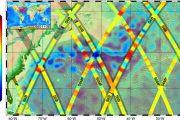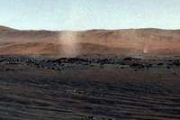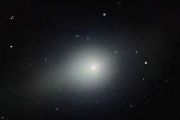
Copernical Team
Earth from Space: Land of giants
 Image:
The Copernicus Sentinel-2 mission takes us over the Sequoia and Kings Canyon National Parks in California’s Sierra Nevada mountains.
Image:
The Copernicus Sentinel-2 mission takes us over the Sequoia and Kings Canyon National Parks in California’s Sierra Nevada mountains. Inner space engineering
 Image:
Inner space engineering
Image:
Inner space engineering Andrea Patassa | Astronaut Reserve Member, Test Pilot, Spiderman? | ESA Explores #11
 Video:
00:09:13
Video:
00:09:13
Meet Andrea Patassa—test pilot, aviator, passionate outdoor adventurer, and Member of ESA’s Astronaut Reserve.
In this miniseries, we take you on a journey through the ESA Astronaut Reserve, diving into the first part of their Astronaut Reserve Training (ART) at the European Astronaut Centre (EAC) near Cologne, Germany. Our “ARTists” are immersing themselves in everything from ESA and the International Space Station programme to the European space industry and institutions. They’re gaining hands-on experience in technical skills like spacecraft systems and robotics, alongside human behaviour, scientific lessons, scuba diving, and survival training.
ESA’s Astronaut Reserve Training programme
Week in images: 17-21 March 2025

Week in images: 17-21 March 2025
Discover our week through the lens
Introducing the new ESA's hyper performance computing
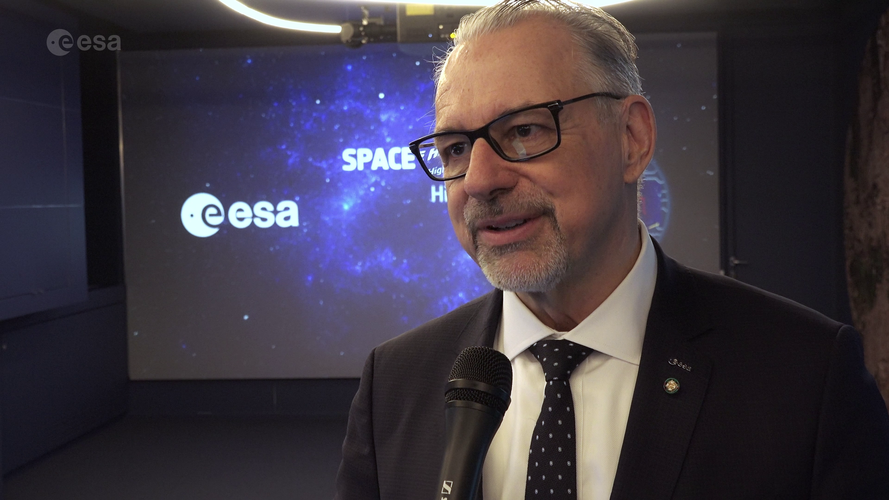 Video:
00:02:46
Video:
00:02:46
The high-performance computing (HPC) environment will be available for scientific research and technological development activities, supporting all ESA programmes as well as the researchers and small- and medium-enterprises from Member States.
ESA and JAXA strengthen ties on Moon and Mars exploration
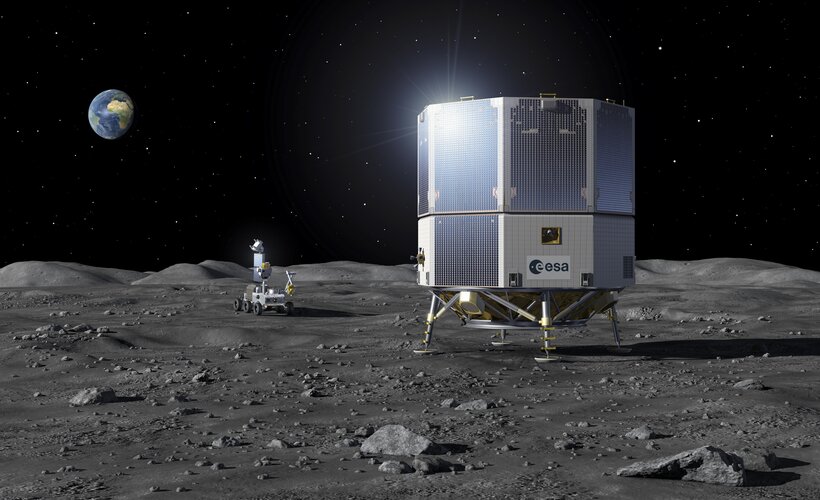
The European Space Agency's (ESA) Director of Human and Robotic Exploration, Daniel Neuenschwander, and the Japan Aerospace Exploration Agency's (JAXA) Vice President for Exploration and Human Spaceflight, Mayumi Matsuura, have signed a new statement of intent focused on Moon and Mars activities. This statement marks their intention towards a step forward in space exploration cooperation between ESA and JAXA, and lays the groundwork for expanded collaboration between the two agencies in advancing science, technology and international partnerships.
Exolaunch surpasses 500 satellite deployments and debuts new Quadro system on SpaceX rideshare
 Exolaunch, a global leader in satellite deployment and mission management, has marked a significant milestone with the successful deployment of its 500th satellite. During SpaceX's Transporter-13 rideshare mission, Exolaunch deployed 27 satellites, delivering close to 1,500 kilograms of payload into orbit for clients from fourteen different countries.
This mission also marked the inaugural
Exolaunch, a global leader in satellite deployment and mission management, has marked a significant milestone with the successful deployment of its 500th satellite. During SpaceX's Transporter-13 rideshare mission, Exolaunch deployed 27 satellites, delivering close to 1,500 kilograms of payload into orbit for clients from fourteen different countries.
This mission also marked the inaugural Chinese scientists unveil six-legged robot for future asteroid and lunar mining
 A research team from China has engineered a six-legged robotic system inspired by insects, aiming to revolutionize how space mining is conducted on the moon and asteroids.
Unlike mining on Earth, extraterrestrial excavation faces unique obstacles due to low-gravity environments. The moon's gravity is about one-sixth of Earth's, and asteroids often have even weaker gravitational pull, makin
A research team from China has engineered a six-legged robotic system inspired by insects, aiming to revolutionize how space mining is conducted on the moon and asteroids.
Unlike mining on Earth, extraterrestrial excavation faces unique obstacles due to low-gravity environments. The moon's gravity is about one-sixth of Earth's, and asteroids often have even weaker gravitational pull, makin Axiom Space selects Siemens software to boost orbital infrastructure programs
 Axiom Space has partnered with Siemens to enhance the design and development of its commercial space projects by implementing tools from the Siemens Xcelerator software suite. This collaboration aims to streamline workflows and support the creation of next-generation space infrastructure, including Axiom's commercial space station and its advanced spacesuit initiatives.
"After an extensive
Axiom Space has partnered with Siemens to enhance the design and development of its commercial space projects by implementing tools from the Siemens Xcelerator software suite. This collaboration aims to streamline workflows and support the creation of next-generation space infrastructure, including Axiom's commercial space station and its advanced spacesuit initiatives.
"After an extensive Webb telescope captures its first direct images of carbon dioxide outside solar system
 The James Webb Space Telescope has captured its first direct images of carbon dioxide in a planet outside the solar system in HR 8799, a multiplanet system 130 light-years away that has long been a key target for planet formation studies.
The observations provide strong evidence that the system's four giant planets formed in much the same way as Jupiter and Saturn, by slowly building solid
The James Webb Space Telescope has captured its first direct images of carbon dioxide in a planet outside the solar system in HR 8799, a multiplanet system 130 light-years away that has long been a key target for planet formation studies.
The observations provide strong evidence that the system's four giant planets formed in much the same way as Jupiter and Saturn, by slowly building solid 






















